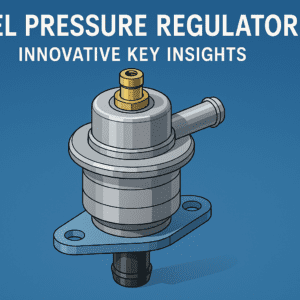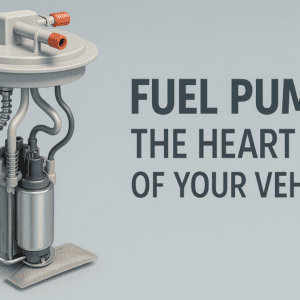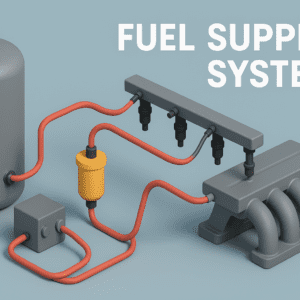
Have you ever wondered what keeps your vehicle running smoothly on long journeys? The unsung hero beneath your car’s hood is none other than the fuel tank. This essential component plays a crucial role in storing and delivering the lifeblood of your engine – fuel. A well-maintained fuel tank can enhance vehicle performance significantly. 🚗💨
Ensuring your fuel tank is properly maintained can enhance the overall performance of your vehicle.
Regular checks and maintenance of your fuel tank are key to ensuring optimal vehicle performance.
Neglecting your fuel tank can lead to costly repairs and can compromise your vehicle’s performance.
Choosing the right fuel tank type can significantly influence your vehicle’s overall efficiency.
We’ll cover various aspects of the fuel tank, including maintenance tips and efficiency improvements.
Yet, many drivers overlook the importance of their fuel tank, potentially risking costly repairs and compromising their vehicle’s performance. From maintenance to efficiency, understanding your fuel tank can make a world of difference in your driving experience. 🔧⛽
Understanding the various types of fuel tanks can help you make informed decisions for your vehicle.
Understanding the right fuel tank for your vehicle is essential for optimal performance.
In this comprehensive guide, we’ll dive deep into the world of fuel tanks, exploring everything from basic functionalities to cutting-edge innovations. Whether you’re a car enthusiast or a casual driver, you’ll discover valuable insights to keep your vehicle running at its best. So buckle up as we take you on a journey through fuel tank basics, maintenance tips, efficiency hacks, and much more!
Get more about engine, click on this link: Engine
Understanding Fuel Tank Basics
Different vehicles require different fuel tank types for optimal performance.
Types of fuel tanks
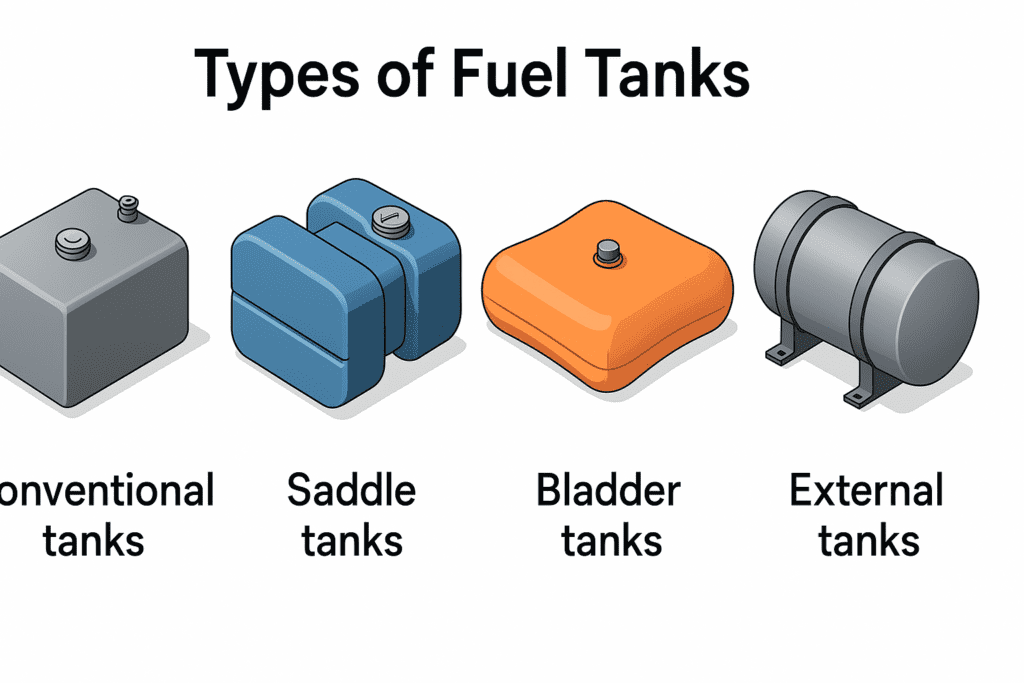
Fuel tanks come in various types, each designed to suit specific vehicles and applications. Here’s a breakdown of the most common types:
- Conventional tanks: These are the standard tanks found in most passenger vehicles.
- Saddle tanks: Often used in trucks, these tanks straddle the vehicle’s frame for better weight distribution.
- Bladder tanks: Flexible and lightweight, commonly used in racing cars and aircraft.
- External tanks: Mounted outside the vehicle, often seen in large trucks or military vehicles.
Materials used in construction
The choice of material for fuel tanks is crucial for safety, durability, and performance. Here’s a comparison of common materials:
| Material | Advantages | Disadvantages |
|---|---|---|
| Steel | Durable, cost-effective | Heavier, prone to rust |
| Aluminum | Lightweight, corrosion-resistant | More expensive, less durable |
| Plastic (HDPE) | Lightweight, rust-proof | Can degrade over time, less impact-resistant |
| Stainless Steel | Highly durable, corrosion-resistant | Expensive, heavier than aluminum |
Choosing the right materials for your fuel tank can enhance durability and performance.
The material used in a fuel tank can greatly affect its durability.
The capacity of your fuel tank can directly affect your vehicle’s range and efficiency.
Capacity considerations
Fuel tank capacity is a critical factor in vehicle design and performance. Consider the following points:
A larger fuel tank allows for longer driving ranges without refueling.
- Vehicle type and size: Larger vehicles typically require larger fuel tanks.
- Intended use: Long-distance vehicles need greater capacity than those for city driving.
- Fuel efficiency: More efficient engines may allow for smaller tanks without sacrificing range.
- Weight distribution: Tank size and placement affect vehicle balance and handling.
Safety features

Modern fuel tanks incorporate various safety features to prevent leaks, fires, and explosions:
- Baffles: Internal structures that reduce fuel sloshing and maintain vehicle stability.
- Fuel pump shut-off: Automatically stops fuel flow in case of a collision.
- Anti-spill valves: Prevent fuel from escaping if the vehicle overturns.
- Flame arrestors: Prevent external flames from entering the tank.
- Pressure relief valves: Regulate internal pressure to prevent tank rupture.
Now that we’ve covered the basics of fuel tanks, including their types, materials, capacity considerations, and safety features, it’s important to understand how proper maintenance can extend the life of your fuel tank and ensure optimal performance. Let’s explore the essential aspects of fuel tank maintenance in the next section.
Get more about lubrication system, click on this link: Lubrication System
Fuel Tank Maintenance
Modern safety features in your fuel tank are essential for preventing leaks and ensuring reliability. Safety features in your fuel tank can prevent serious accidents.
Regular inspection tips
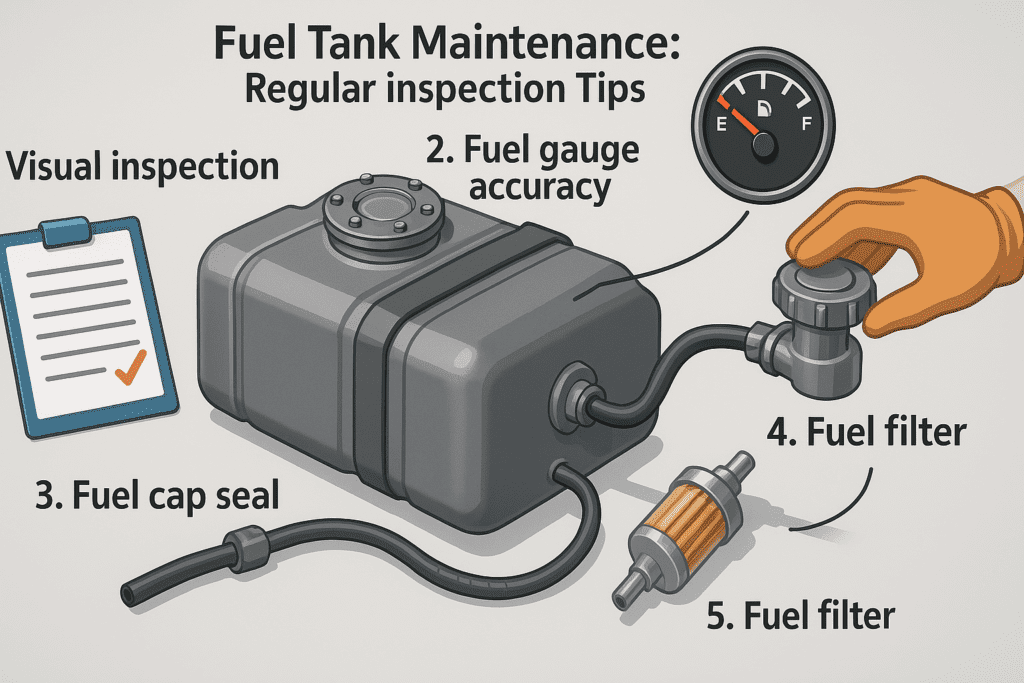
Regular fuel tank inspections are crucial for maintaining your vehicle’s performance and safety. Here are some essential tips to keep your fuel tank in top condition:
- Visual inspection: Check for signs of rust, dents, or leaks
- Fuel gauge accuracy: Verify that the fuel gauge is working correctly
- Fuel cap seal: Ensure the cap seals properly to prevent fuel evaporation
- Fuel lines: Examine for cracks, kinks, or loose connections
- Fuel filter: Inspect for clogs or damage
| Inspection Area | Frequency | What to Look For |
|---|---|---|
| Exterior | Monthly | Rust, dents, leaks |
| Fuel gauge | Each fill-up | Accuracy, responsiveness |
| Fuel cap | Monthly | Proper sealing, wear |
| Fuel lines | Quarterly | Cracks, kinks, loose connections |
| Fuel filter | Bi-annually | Clogs, discoloration |
Cleaning procedures

Proper maintenance of your fuel tank can increase its lifespan significantly.
Regular checks of your fuel tank can prevent future issues.
Keeping your fuel tank clean is essential for optimal performance. Follow these steps for effective cleaning:
- Drain the fuel tank completely
- Remove the tank if possible for thorough cleaning
- Use a specialized fuel tank cleaner or a mixture of warm water and mild detergent
- Scrub the interior with a soft brush to remove debris and residue
- Rinse thoroughly with clean water
- Allow the tank to dry completely before refilling
For stubborn deposits, consider using a professional fuel system cleaning service.
Addressing common issues
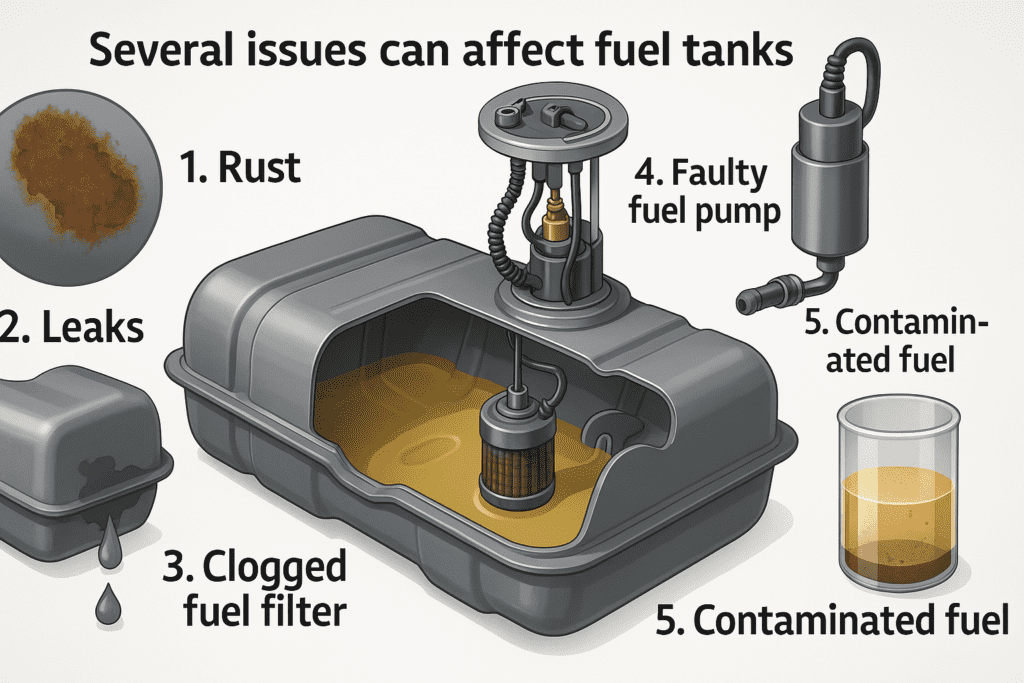
Several issues can affect fuel tanks. Here’s how to address some common problems:
- Rust: Apply a rust converter and seal with a fuel-resistant coating
- Leaks: Small leaks can be patched, but larger ones may require tank replacement
- Clogged fuel filter: Replace the filter according to manufacturer recommendations
- Faulty fuel pump: Have it diagnosed and replaced by a professional mechanic
- Contaminated fuel: Drain the tank and refill with fresh fuel
Preventing fuel contamination
Contaminated fuel can cause significant damage to your vehicle’s engine. Follow these preventive measures:
- Use reputable fuel stations
- Keep the fuel tank at least quarter full to minimize condensation
- Add a fuel stabilizer for long-term storage
- Replace the fuel filter regularly
- Avoid mixing different types of fuel
By following these maintenance practices, you can extend the life of your fuel tank and ensure optimal vehicle performance. Regular inspections, proper cleaning, addressing issues promptly, and preventing contamination are key to maintaining a healthy fuel system. Remember that some maintenance tasks may require professional assistance, especially when dealing with complex issues or when working with older vehicles. With proper care, your fuel tank will continue to serve your vehicle efficiently for years to come. Next, we’ll explore how to enhance fuel efficiency, which is closely related to proper fuel tank maintenance.
Get more about steering system, click on this link: Steering System
Enhancing Fuel Efficiency
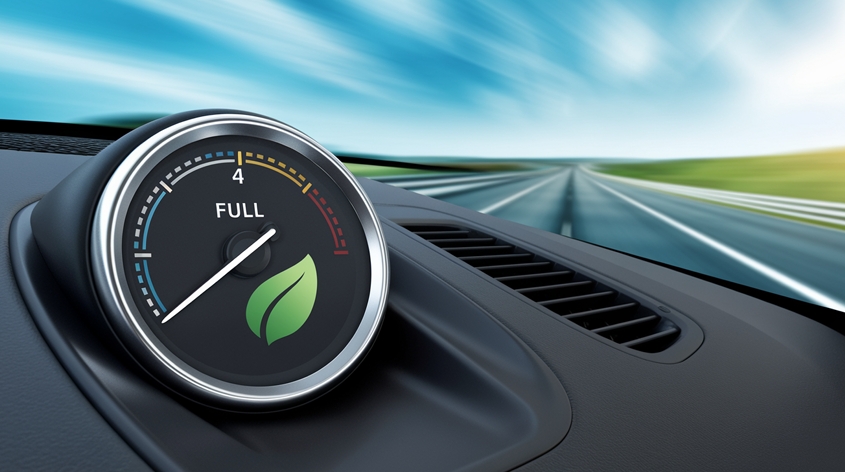
Proper fuel tank sizing
When it comes to enhancing fuel efficiency, proper fuel tank sizing plays a crucial role. The size of your fuel tank can significantly impact your vehicle’s overall performance and fuel consumption. Here’s a breakdown of how different tank sizes affect efficiency:
| Tank Size | Pros | Cons |
|---|---|---|
| Small | Lighter weight, better fuel economy | More frequent refueling |
| Medium | Balance between range and weight | Moderate impact on efficiency |
| Large | Longer range, fewer refueling stops | Added weight, reduced efficiency |
To determine the optimal fuel tank size for your vehicle, consider factors such as:
- Typical driving distances
- Fuel consumption rate
- Vehicle weight and payload capacity
- Available refueling options on regular routes
Optimizing fuel storage
Proper fuel storage is essential for maintaining fuel quality and maximizing efficiency. Here are some key strategies:
- Keep the tank clean: Regular cleaning prevents sediment buildup and contamination
- Maintain proper fuel levels: Avoid running on low fuel to prevent air pockets and fuel pump damage
- Use high-quality fuel: Premium fuels often contain additives that improve engine performance
- Consider fuel stabilizers: These can extend fuel shelf life and prevent degradation
Monitoring fuel consumption
Keeping track of your fuel consumption is vital for identifying areas of improvement. Modern vehicles often come equipped with built-in fuel consumption monitors, but you can also use these methods:
- Manual tracking: Record mileage and fuel purchases
- Smartphone apps: Many apps can help track and analyze fuel consumption
- OBD-II devices: These plug into your vehicle’s diagnostics port for real-time data
By regularly monitoring your fuel consumption, you can:
- Identify sudden changes in efficiency
- Adjust driving habits for better fuel economy
- Plan maintenance activities to maintain optimal performance
Implementing fuel-saving technologies
Advancements in automotive technology have led to various fuel-saving innovations. Some of these include:
- Start-stop systems: Automatically shut off the engine when idling
- Regenerative braking: Captures energy during braking to recharge batteries
- Cylinder deactivation: Temporarily shuts down cylinders when full power isn’t needed
- Advanced fuel injection systems: Precisely control fuel delivery for optimal combustion
Implementing these technologies can significantly improve your vehicle’s fuel efficiency. However, it’s important to note that the effectiveness of these systems often depends on proper maintenance and driving habits.
As we’ve explored various methods to enhance fuel efficiency, it’s clear that a combination of proper tank sizing, optimal storage, diligent monitoring, and innovative technologies can lead to substantial improvements in fuel economy. Next, we’ll delve into the environmental considerations surrounding fuel tanks and their impact on our ecosystem.
Get more about fuel supply system, click on this link: Fuel Supply System
Environmental Considerations
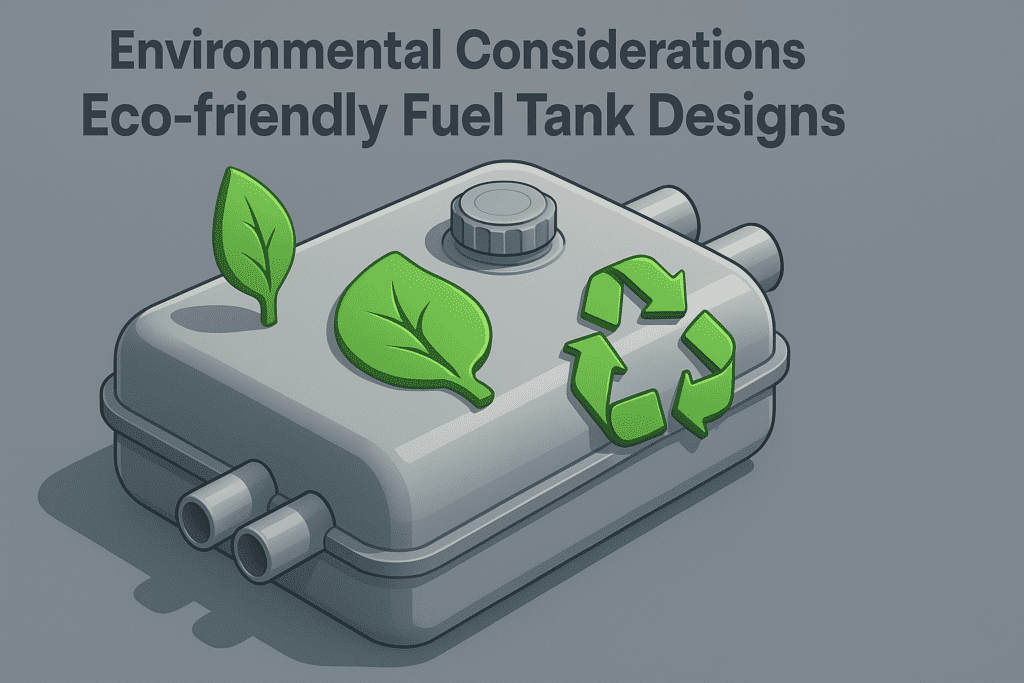
Eco-friendly fuel tank designs
As environmental concerns continue to shape the automotive industry, eco-friendly fuel tank designs have become increasingly important. These innovative designs focus on reducing emissions, improving fuel efficiency, and minimizing the environmental impact of vehicles.
One of the most promising eco-friendly fuel tank designs is the lightweight composite tank. Made from advanced materials such as high-density polyethylene (HDPE) or carbon fiber, these tanks offer significant weight reduction compared to traditional metal tanks. This weight reduction directly contributes to improved fuel efficiency and reduced emissions.
Another innovative design is the multi-layer fuel tank, which incorporates barrier layers to minimize fuel permeation. This technology helps reduce evaporative emissions, a significant source of air pollution from vehicles.
| Design Feature | Environmental Benefit |
|---|---|
| Lightweight materials | Improved fuel efficiency |
| Multi-layer construction | Reduced evaporative emissions |
| Optimized shape | Enhanced vehicle aerodynamics |
| Recyclable materials | Reduced waste at end-of-life |
Understanding your fuel tank is essential for enhancing fuel efficiency.
Leak prevention strategies
The right size of fuel tank can greatly affect your vehicle’s performance.
Preventing fuel leaks is crucial for both environmental protection and vehicle safety. Modern fuel tanks employ various strategies to minimize the risk of leaks:
- Advanced sealing technologies: High-performance gaskets and seals are used to create robust connections between the fuel tank and other components of the fuel system.
- Corrosion-resistant materials: Tanks made from materials like stainless steel or specially treated alloys resist corrosion, reducing the risk of leaks due to material degradation.
- Integrated leak detection systems: Some advanced fuel tanks incorporate sensors that can detect even minor leaks, allowing for early intervention.
- Reinforced construction: Strategic reinforcement in high-stress areas of the tank helps prevent structural failures that could lead to leaks.
These strategies not only protect the environment but also contribute to the overall safety and longevity of the vehicle’s fuel system.
Sustainable fuel storage practices
Sustainable fuel storage extends beyond the design of the fuel tank itself to encompass broader practices in fuel management and vehicle maintenance:
- Regular inspections: Routine checks of the fuel system can identify potential issues before they lead to leaks or other environmental hazards.
- Proper disposal of old tanks: When replacing fuel tanks, it’s essential to dispose of old ones through authorized recycling programs to minimize environmental impact.
- Use of biofuels: Some modern fuel tanks are designed to be compatible with biofuels, which can have a lower carbon footprint compared to traditional fossil fuels.
- Vapor recovery systems: These systems capture fuel vapors during refueling, reducing air pollution and conserving fuel.
By implementing these sustainable practices, vehicle owners and manufacturers can significantly reduce the environmental impact of fuel storage and usage.
As we move towards more sustainable transportation solutions, the role of eco-friendly fuel tanks and responsible fuel management practices becomes increasingly critical. These advancements not only benefit the environment but also contribute to the overall efficiency and performance of vehicles.
Choosing the Right Fuel Tank
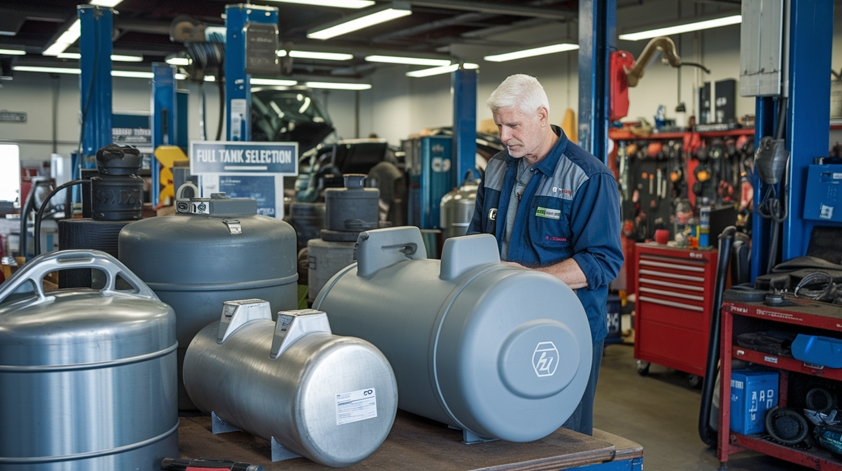
Assessing your vehicle’s needs
When choosing the right fuel tank for your vehicle, it’s crucial to start by assessing your specific needs. Consider factors such as:
- Fuel capacity requirements
- Vehicle make and model compatibility
- Intended use (daily commuting, long-distance travel, off-roading)
- Climate conditions in your area
To help you evaluate these factors, use the following table as a guide:
| Factor | Considerations |
|---|---|
| Capacity | Desired range, fuel availability |
| Compatibility | OEM specifications, mounting points |
| Usage | Frequency of refueling, terrain type |
| Climate | Material durability, insulation needs |
Comparing aftermarket options
Aftermarket fuel tanks offer a wide range of choices to suit various needs and preferences. When comparing options, focus on:
- Material quality (e.g., steel, aluminum, plastic)
- Capacity increase over stock tank
- Durability and corrosion resistance
- Warranty and customer support
Here’s a list of popular aftermarket fuel tank materials and their characteristics:
- Steel: Durable, affordable, but heavier
- Aluminum: Lightweight, corrosion-resistant, but more expensive
- Plastic: Lightweight, affordable, but less durable
- Stainless steel: Highly durable, corrosion-resistant, but costly
Custom vs. stock fuel tanks
Deciding between custom and stock fuel tanks depends on your specific requirements and budget. Consider the following factors:
- Performance needs
- Aesthetic preferences
- Long-term cost-effectiveness
- Availability of replacement parts
Custom fuel tanks offer advantages such as increased capacity, improved fuel efficiency, and tailored designs. However, they may come with higher upfront costs and potential compatibility issues. Stock fuel tanks, on the other hand, ensure perfect fitment and easier maintenance but may limit capacity and performance options.
Installation considerations
Before finalizing your fuel tank choice, take into account the installation process:
- Complexity of installation (DIY vs. professional)
- Required modifications to the vehicle
- Compatibility with existing fuel system components
- Safety considerations and regulations
It’s essential to ensure that the new fuel tank meets all safety standards and local regulations. If you’re not confident in your ability to install the tank properly, consider hiring a professional to ensure proper fitment and functionality.
Now that you understand the key factors in choosing the right fuel tank, you’ll be better equipped to make an informed decision that meets your vehicle’s needs and enhances its performance. Next, we’ll explore some exciting innovations in fuel tank technology that are shaping the future of automotive fuel systems.
Fuel Tank Innovations
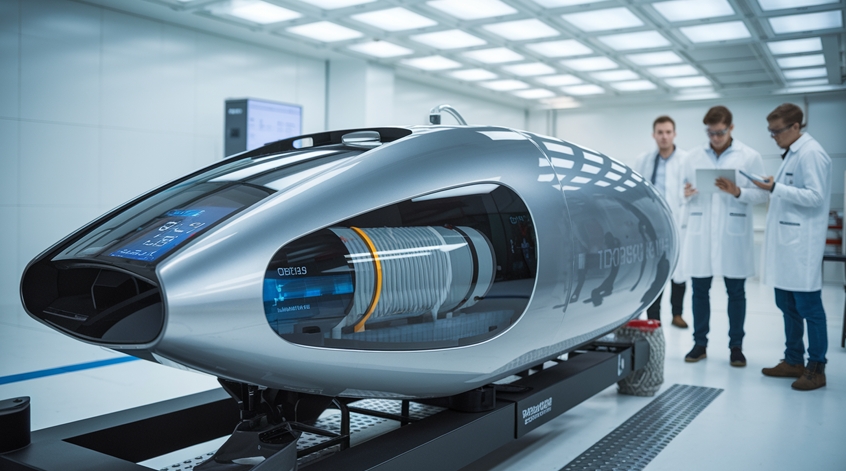
Smart fuel monitoring systems
In the ever-evolving world of automotive technology, smart fuel monitoring systems have emerged as a game-changing innovation for fuel tanks. These advanced systems provide real-time data on fuel consumption, tank levels, and even fuel quality, revolutionizing how we manage and interact with our vehicles’ fuel systems.
One of the key features of smart fuel monitoring systems is their ability to provide accurate and instant fuel level readings. Unlike traditional fuel gauges that often give rough estimates, these systems use advanced sensors to measure fuel levels with precision. This accuracy helps drivers plan their refueling stops more efficiently, reducing the risk of running out of fuel unexpectedly.
Moreover, these systems can track fuel consumption patterns over time, offering valuable insights into driving habits and vehicle performance. This data can be used to:
Innovations in fuel tank designs continue to emerge for better efficiency.
- Optimize driving behavior for better fuel efficiency
- Detect potential fuel system issues early
- Plan maintenance schedules more effectively
- Manage fleet operations more efficiently for businesses
Here’s a comparison of traditional fuel gauges vs. smart fuel monitoring systems:
| Feature | Traditional Fuel Gauge | Smart Fuel Monitoring System |
|---|---|---|
| Accuracy | Approximate | Highly precise |
| Real-time data | Limited | Comprehensive |
| Consumption tracking | Manual | Automatic and detailed |
| Predictive analysis | None | Available |
| Integration with other systems | Limited | Extensive |
Advanced filtration technologies
As we move towards more efficient and cleaner fuel systems, advanced filtration technologies play a crucial role in maintaining fuel quality and protecting engine components. These innovative filtration systems go beyond traditional fuel filters, offering superior protection against contaminants and improving overall fuel efficiency.
Some key advancements in fuel filtration include:
- Nanofiber technology: Ultra-fine fibers that can trap even the smallest particles
- Multi-stage filtration: Combines different filtration methods for comprehensive protection
- Water-separating filters: Effectively remove water from fuel, preventing corrosion and microbial growth
- Self-cleaning filters: Reduce maintenance needs and extend filter life
These advanced filtration technologies not only enhance engine performance but also contribute to longer engine life and reduced emissions.
Self-sealing fuel tanks
Safety has always been a primary concern in fuel tank design, and self-sealing fuel tanks represent a significant leap forward in this area. Originally developed for military applications, this technology is now finding its way into civilian vehicles, offering enhanced protection against fuel leaks in the event of an accident or puncture.
Self-sealing fuel tanks typically consist of multiple layers:
- An inner fuel-resistant layer
- A self-sealing layer made of special rubber compounds
- An outer protective layer
When the tank is punctured, the self-sealing layer reacts with the fuel, swelling and sealing the hole almost instantly. This technology significantly reduces the risk of fuel fires and explosions in accidents, making vehicles safer for occupants and first responders.
Weight reduction techniques
In the pursuit of better fuel efficiency and performance, automotive engineers are constantly seeking ways to reduce vehicle weight. Fuel tanks, traditionally made of heavy materials like steel, have been a target for weight reduction efforts. Innovative techniques and materials are now being employed to create lighter yet equally durable fuel tanks.
Some weight reduction strategies include:
- Using high-density polyethylene (HDPE) instead of metal
- Implementing advanced molding techniques to create thinner yet stronger tank walls
- Integrating fuel tanks into the vehicle structure to eliminate redundant materials
- Utilizing composite materials for specific tank components
These weight reduction techniques not only contribute to improved fuel efficiency but also help in reducing overall vehicle emissions, aligning with increasingly stringent environmental regulations.
Conclusion

As we’ve explored the various aspects of fuel tanks, from their basic functions to innovative designs, it’s clear that these components play a crucial role in our vehicles and daily lives. Understanding fuel tanks and their proper maintenance not only ensures the longevity of your vehicle but also contributes to better fuel efficiency and environmental sustainability.
Let’s recap some of the key points we’ve covered:
- Fuel Tank Basics: We learned about the fundamental components and functions of fuel tanks, highlighting their importance in storing and delivering fuel to the engine.
- Maintenance: Regular maintenance emerged as a critical factor in preserving fuel tank integrity and overall vehicle performance.
- Fuel Efficiency: We discovered how fuel tank design and proper care can significantly impact fuel economy, potentially saving you money and reducing environmental impact.
- Environmental Considerations: The discussion on eco-friendly fuel tanks emphasized the automotive industry’s shift towards more sustainable practices.
- Choosing the Right Fuel Tank: We provided guidance on selecting the appropriate fuel tank for your vehicle, considering factors such as capacity, material, and compatibility.
- Innovations: Lastly, we explored cutting-edge developments in fuel tank technology, showcasing how the industry is evolving to meet future challenges.
Here’s a quick comparison of traditional and modern fuel tank features:
| Feature | Traditional Fuel Tanks | Modern Fuel Tanks |
|---|---|---|
| Material | Primarily metal | Plastic, composite materials |
| Weight | Heavier | Lighter |
| Corrosion Resistance | Lower | Higher |
| Fuel Efficiency Impact | Moderate | Improved |
| Environmental Impact | Higher | Lower |
| Smart Features | None | Fuel level sensors, leak detection |
As vehicles continue to evolve, so too will fuel tank technology. Whether you’re a car enthusiast or simply a daily commuter, staying informed about your vehicle’s fuel system can lead to better performance, increased safety, and a reduced environmental footprint. Remember, a well-maintained fuel tank is not just about keeping your car running – it’s about optimizing your vehicle’s efficiency, safety, and impact on the world around us.
FAQs

How often should I check my fuel tank for leaks or damage?
It’s recommended to visually inspect your fuel tank for signs of leaks or damage at least once every three months or during regular vehicle maintenance. However, if you notice any unusual odors or decreased fuel efficiency, it’s crucial to check your fuel tank immediately.
What are the signs of a failing fuel tank?
Common signs of a failing fuel tank include:
- Fuel odor inside or outside the vehicle
- Visible fuel leaks under the vehicle
- Decreased fuel efficiency
- Engine misfires or stalling
- Activation of the check engine light
- Rust or corrosion on the tank’s surface
Can I repair a damaged fuel tank myself?
While minor repairs like small punctures can sometimes be fixed with specialized fuel tank repair kits, it’s generally recommended to have a professional mechanic handle fuel tank repairs. This ensures proper safety measures are taken and the repair is done correctly.
How long does a typical fuel tank last?
The lifespan of a fuel tank can vary depending on several factors:
| Factor | Impact on Lifespan |
|---|---|
| Vehicle make and model | 8-10 years on average |
| Driving conditions | Harsh conditions may reduce lifespan |
| Maintenance | Regular maintenance can extend lifespan |
| Material quality | Higher quality materials last longer |
With proper care and maintenance, many fuel tanks can last the lifetime of the vehicle.
Are there eco-friendly alternatives to traditional fuel tanks?
Yes, there are several eco-friendly alternatives to traditional fuel tanks:
- Electric vehicle batteries
- Hydrogen fuel cells
- Biofuel tanks
- Compressed natural gas (CNG) tanks
- Liquefied petroleum gas (LPG) tanks
These alternatives aim to reduce carbon emissions and promote sustainable transportation.
How can I improve my vehicle’s fuel efficiency?
To improve fuel efficiency:
- Maintain proper tire pressure
- Use the recommended grade of motor oil
- Remove excess weight from the vehicle
- Avoid aggressive driving and excessive idling
- Keep up with regular vehicle maintenance
- Use cruise control on highways
- Plan efficient routes to minimize unnecessary driving
What should I do if I smell fuel inside my vehicle?
If you smell fuel inside your vehicle, take these steps:
- Pull over safely and turn off the engine
- Open windows to ventilate the vehicle
- Check for visible fuel leaks
- Do not attempt to start the vehicle
- Call for roadside assistance or a tow truck
- Have a professional mechanic inspect the fuel system
Fuel odors can indicate serious safety issues, so it’s essential to address them promptly.
Now that we’ve addressed some common questions about fuel tanks, let’s explore some of the latest innovations in fuel tank technology and how they’re shaping the future of automotive fuel systems.
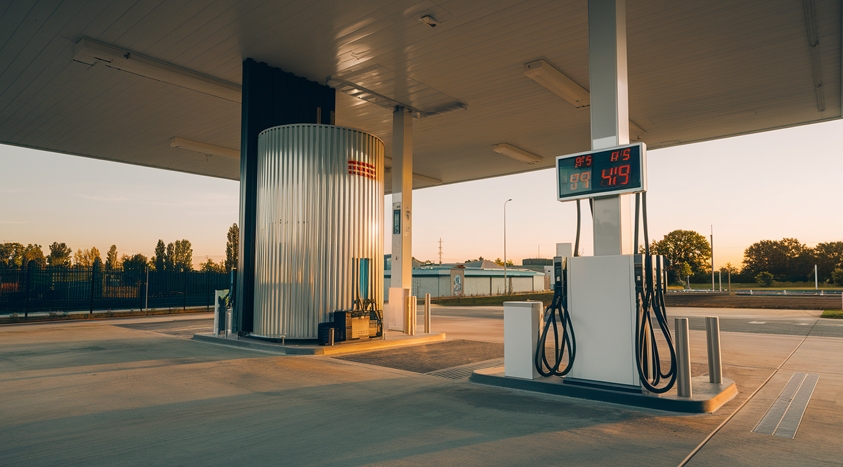
The fuel tank is a crucial component in any vehicle, impacting its performance, efficiency, and environmental footprint. From understanding the basics to exploring innovative designs, proper maintenance and informed choices can significantly enhance your vehicle’s overall performance and longevity. By prioritizing regular inspections, cleaning, and timely repairs, you can ensure optimal fuel efficiency and reduce the risk of costly breakdowns.
As technology advances, fuel tanks are evolving to meet stricter environmental standards and improve vehicle efficiency. Whether you’re a car enthusiast or simply looking to make the most of your vehicle, staying informed about fuel tank innovations and best practices is essential. By making conscious decisions about fuel tank maintenance and upgrades, you can contribute to a more sustainable future while enjoying improved performance and cost savings in your daily driving experience.
Understanding the role of your fuel tank can help in making informed choices.
Visit website, click on this link: Autobiography Zone
